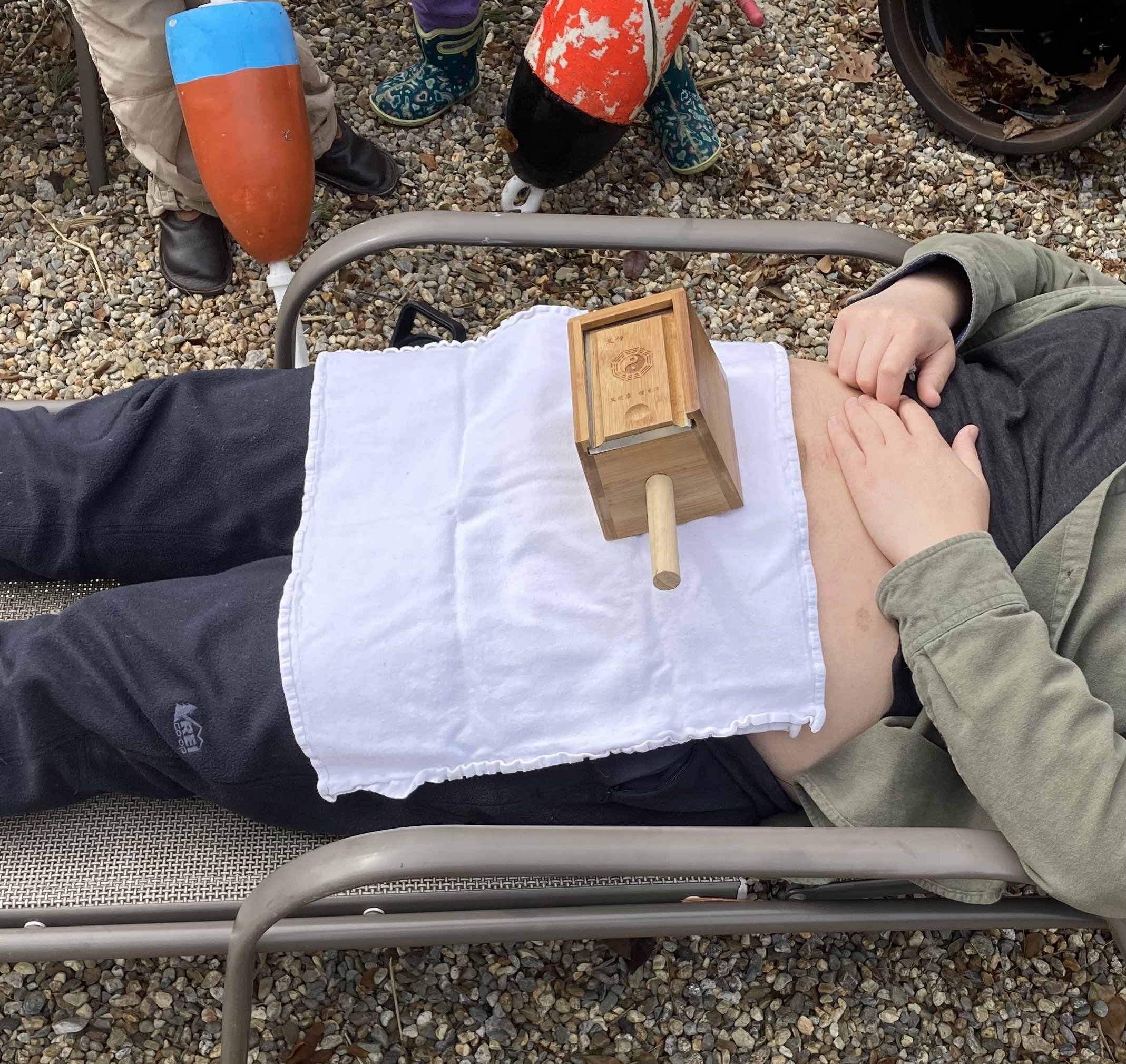Moxibustion to Enhance Postpartum Healing
What is Moxibustion?
Moxibustion can be a great tool to aid mothers’ healing in their postpartum journeys. It is the burning of the herb Chinese Mugwort. It is typically used as a tool in Traditional Chinese Medicine (TCM), burned over specific acupuncture meridians. You may have heard its use in postpartum referred to as, “mother warming”.
Why is Moxibustion Used in Postpartum?
Moxibustion is considered warming and nourishing. TCM refers to dis-ease in the body as occurring due to deficiencies and excesses of cold, damp, or heat. The goal is to bring the body back to a state of balance. Pregnancy is considered a time with a lot of heat and after baby is born, postpartum is considered a cold state. This understanding is the basis of the use of a lot of warmth in postpartum, to balance the cold and bring the body to a place of equilibrium [1].
Moxa is one way that TCM brings heat to the postpartum body. As I learned from Rachelle Garcia Seliga of INNATE Traditions [2], in postpartum it is typically applied over the lower abdomen or lower back and the uterus.
It is said that moxibustion can:
help increase blood supply to the uterus, which in turn:
helps bring more oxygen and nutrients to the area
aids it to return to pre-pregnancy size and positioning
move blood and fluid out of the uterus which:
helps accelerate the discharge of lochia [3]
can prevent or slow excessive postpartum bleeding
brings more white blood cells to the area, helping to prevent infection
help ligaments return to their pre-pregnancy length and strength
help stimulate milk supply [4]
Overall, It moves blood through the area, preventing stagnation and bringing tone to the area.
What is a session like?
The first moxibustion session is typically done within the first week postpartum. Dried Moxa is placed in a moxibustion box and the herb is lit for a slow burn. The box is placed over Mama’s lower abdomen or lower back with some cloth under the box to comfort. A session typically lasts about thirty minutes and we can do them five to ten times in the first few weeks postpartum.
This does involve the burning of the herb, so we typically do it outside or in a well-ventilated area due to the smoke. During the treatment, we are in communication about how you are feeling and how the heat levels are. It is entirely dictated by you feeling good. If it is too warm, more cloth is added, if it is not warm enough, we use less cloth or none. If it still feels too warm despite multiple layers of cloth, that typically means it has penetrated and is enough for the day. This is all about you and your healing, and your open communication about how you are feeling in your body is crucial to our work together. You are in control.
Moxa treatment outside with the older littles present, witnessing mama being held and cared for in her postpartum.
Mamas who have had a C-section can do this as well. Depending on your comfort, we can place the box over your lower back to avoid the incision area and still get you the benefits and nurturing this provides!
After a treatment, mothers I work with report feeling relaxed. Their cheeks are visibly rosy pink, and they feel warmth throughout their body. Many mothers report a relief of lower back or abdominal pain or pressure and feeling less fatigued.
Moxibustion can be a great tool to aid in the recovery of mamas in their postpartum journey. Any warmth to the area is great (sitz baths and vaginal steaming are other great tools to bring warmth to the area), and the addition of herbs that work with the body during this time can enhance the effect.
Please reach out with any questions about this or inquiries about working together. I would love to support you and your healing as you flourish in your role as MOTHER.
Have you ever experienced a moxibustion treatment? Let me know your thoughts below!
xo,
Alyssa
References:
1. Deng, H., & Shen, X. (2013). The mechanism of moxibustion: ancient theory and modern research. Evidence-based complementary and alternative medicine : eCAM, 2013, 379291. https://doi.org/10.1155/2013/379291
2. R. Garcia Seliga (INNATE Postpartum Care October 14, 2020) https://www.innatetraditions.com
3. Wang-lu CHEN, Ling GAO, Xi-yan GAO, (2023) Penetration moxibustion for postpartum subinvolution of uterus: Two case reports and mechanism analysis. World Journal of Acupuncture - Moxibustion, Volume 33, Issue 3, Pages 287-292. ISSN 1003-5257, https://doi.org/10.1016/j.wjam.2023.03.003. (https://www.sciencedirect.com/science/article/pii/S1003525723000235)
4. How Do You Treat Reduced Lactation in Nursing Mothers in Your Practice?. (2020). Medical acupuncture, 32(5), 325–328. https://doi.org/10.1089/acu.2020.29156.cpl

